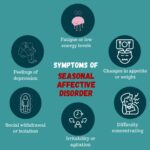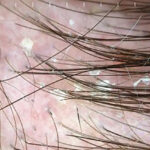Seasonal allergic rhinitis, commonly referred to as hay fever, is an immunoglobulin E (IgE)-mediated allergic condition characterized by nasal inflammation triggered by seasonal allergens such as pollen from trees, grasses, and weeds. It primarily affects the upper respiratory tract and is one of the most prevalent allergic disorders worldwide.

Key Causes and Triggers of Seasonal Allergic Rhinitis
The primary cause of seasonal allergic rhinitis is an exaggerated immune response to airborne allergens present during specific seasons. The most common triggers include:
- Tree pollen (spring): Oak, birch, cedar
- Grass pollen (late spring to summer): Timothy, Bermuda, ryegrass
- Weed pollen (late summer to fall): Ragweed, mugwort, pigweed
Climatic conditions, wind patterns, and geographic location can influence pollen concentrations and subsequently the severity of symptoms.
Recognizing the Symptoms of Seasonal Allergic Rhinitis
Typical symptoms include:
- Sneezing
- Nasal congestion
- Rhinorrhea (runny nose)
- Nasal itching
- Postnasal drip
- Red, itchy, or watery eyes
- Fatigue and poor sleep quality due to nasal obstruction
These symptoms often resemble those of the common cold but persist for longer durations and recur annually with exposure to seasonal allergens.
Diagnosis of Seasonal Allergic Rhinitis
Accurate diagnosis is essential to differentiate allergic rhinitis from other nasal conditions. The diagnostic process involves:
- Clinical History: Detailed patient history focusing on symptom timing, triggers, family history of allergies, and environmental exposure.
- Physical Examination: Inspection of nasal mucosa, eyes, and throat.
- Allergy Testing:
- Skin Prick Test (SPT): Identifies immediate hypersensitivity reactions.
- Serum Specific IgE Testing: Quantifies allergen-specific IgE antibodies.
Differential Diagnosis
Conditions that mimic seasonal allergic rhinitis must be ruled out:
- Non-allergic rhinitis (vasomotor, irritant-induced)
- Chronic sinusitis
- Nasal polyps
- Upper respiratory infections
Treatment Options for Seasonal Allergic Rhinitis
1. Allergen Avoidance
Reducing exposure to known allergens remains a foundational strategy:
- Stay indoors during high pollen count days.
- Use air purifiers with HEPA filters.
- Keep windows closed; use air conditioning.
- Shower and change clothes after outdoor activities.
2. Pharmacologic Therapy
A combination of medications is typically used for optimal symptom control:
| Medication Class | Examples | Action |
|---|---|---|
| Antihistamines | Loratadine, Cetirizine | Relieve sneezing, itching, rhinorrhea |
| Intranasal Steroids | Fluticasone, Budesonide | Reduce nasal inflammation |
| Decongestants | Pseudoephedrine | Alleviate nasal congestion (short-term) |
| Leukotriene Receptor Antagonists | Montelukast | Block inflammatory pathways |
| Mast Cell Stabilizers | Cromolyn sodium | Prevent histamine release |
3. Immunotherapy
Allergen-specific immunotherapy may be considered in moderate to severe cases:
- Subcutaneous Immunotherapy (SCIT): Injections administered over 3–5 years.
- Sublingual Immunotherapy (SLIT): Tablets or drops placed under the tongue.
These therapies reduce sensitivity over time and offer long-term symptom relief.
Complications of Untreated Allergic Rhinitis
Failure to manage seasonal allergic rhinitis can lead to:
- Chronic sinusitis
- Asthma exacerbations
- Sleep disturbances
- Impaired cognitive function and quality of life
Lifestyle and Supportive Strategies
- Nasal irrigation: Using saline sprays or neti pots helps clear allergens and reduce nasal symptoms.
- Dietary considerations: Anti-inflammatory diets rich in omega-3 fatty acids and antioxidants may help reduce allergic responses.
- Monitoring pollen forecasts: Mobile apps and websites can help track daily allergen levels.
Prognosis and Long-Term Outlook
With consistent treatment and preventive measures, most individuals experience significant symptom control. Immunotherapy can modify the disease course and potentially prevent new allergen sensitizations.
Seasonal allergic rhinitis is a common but manageable condition that can significantly impact daily life if not appropriately addressed. By understanding its triggers, recognizing symptoms early, and implementing effective treatment strategies, long-term control and improved quality of life are achievable.

